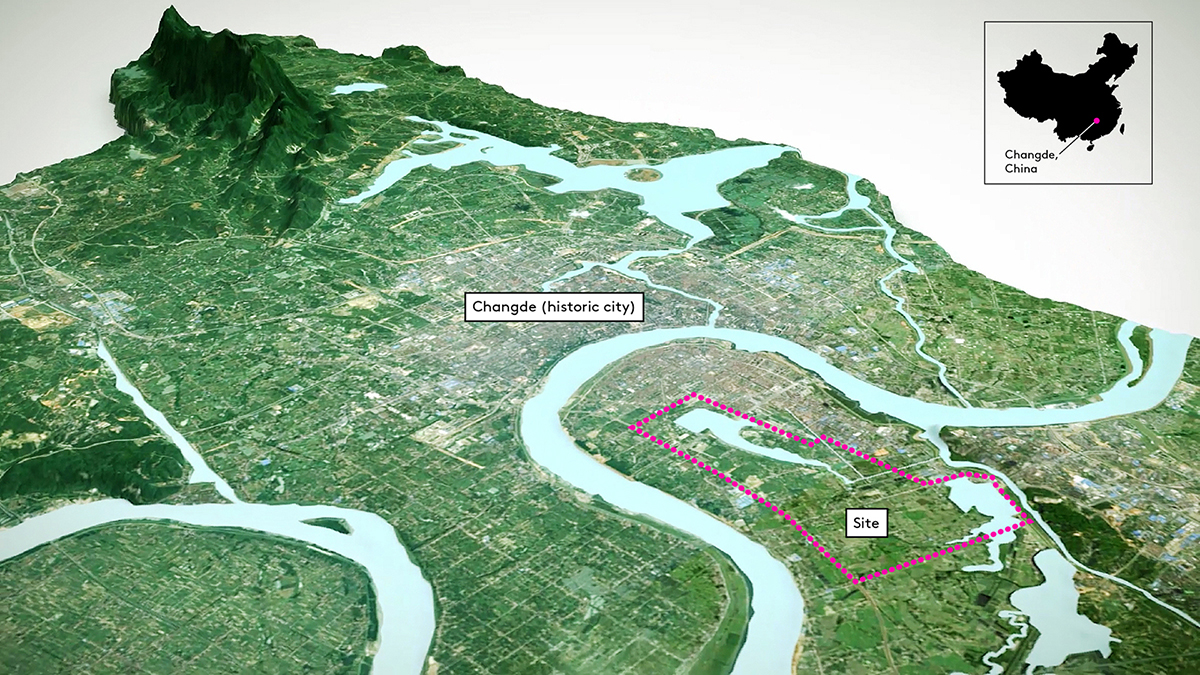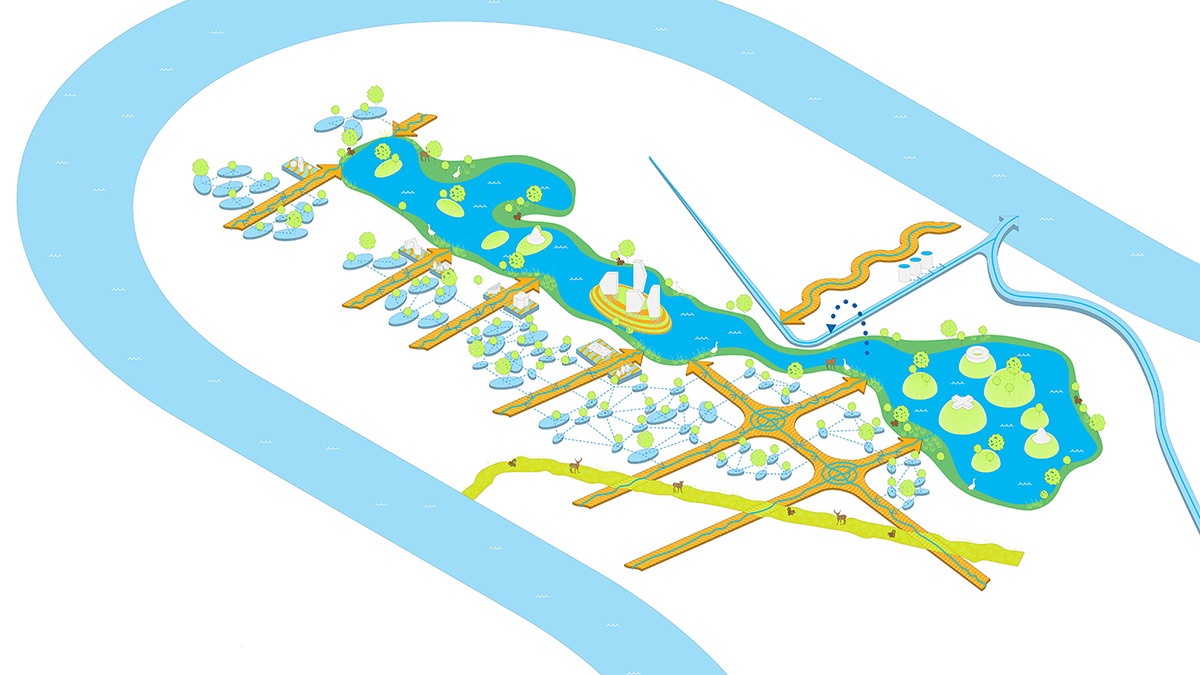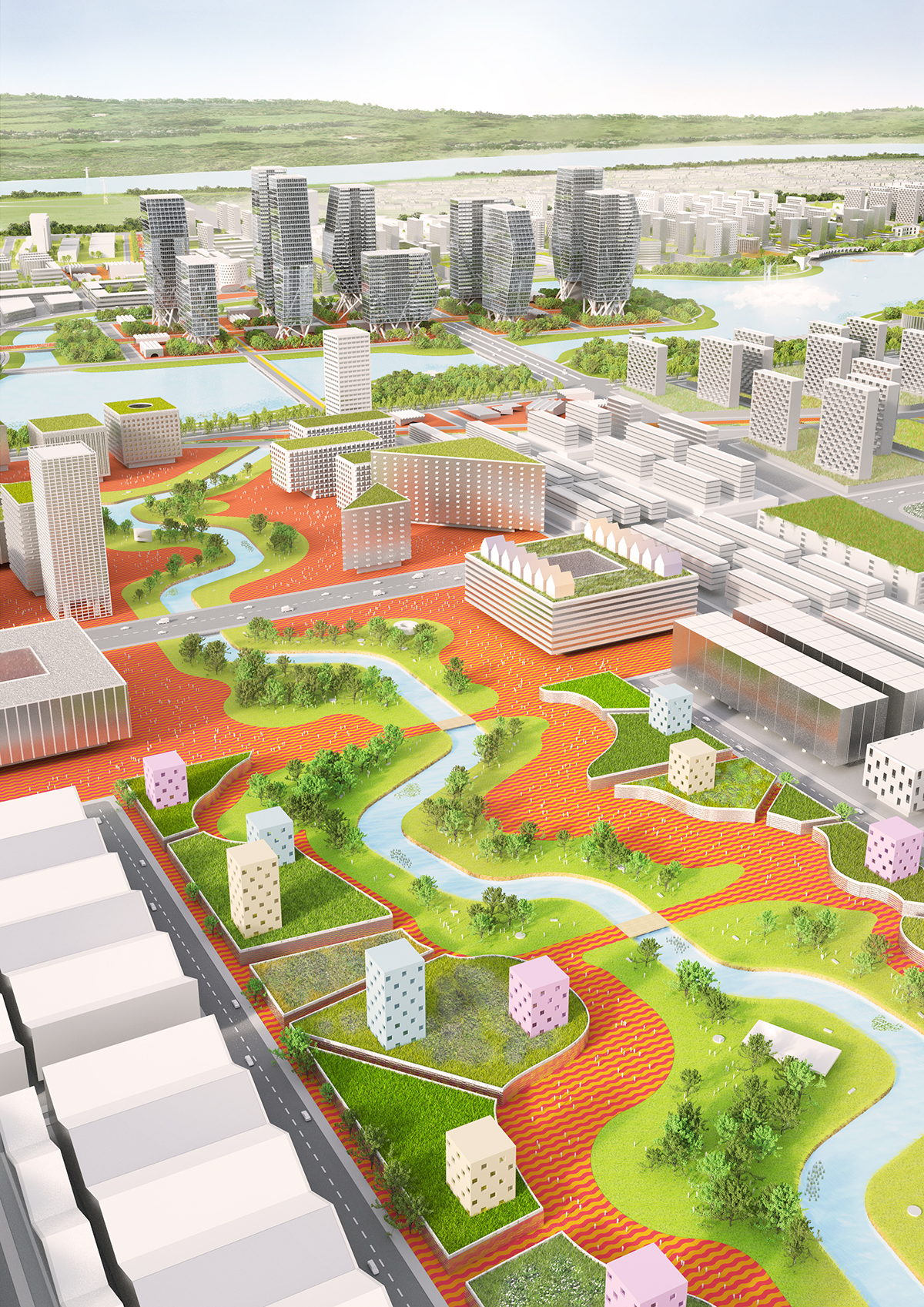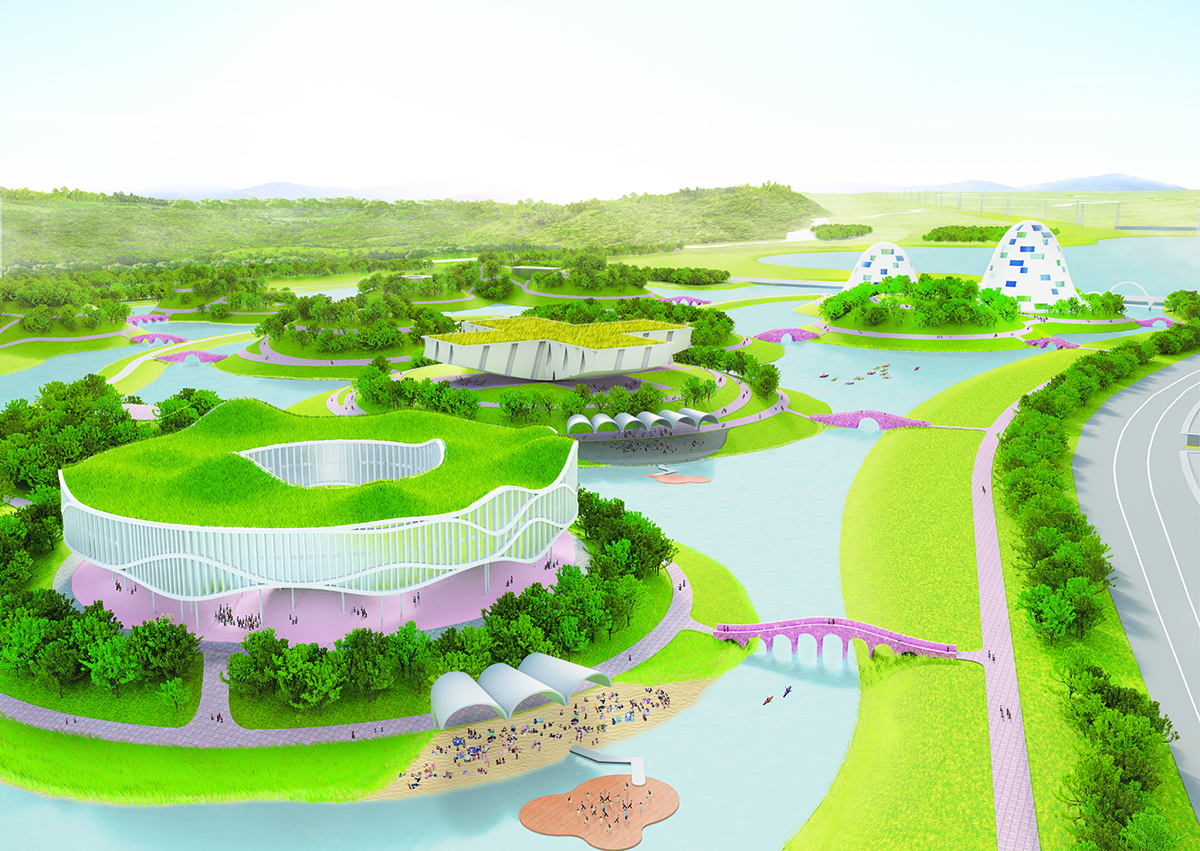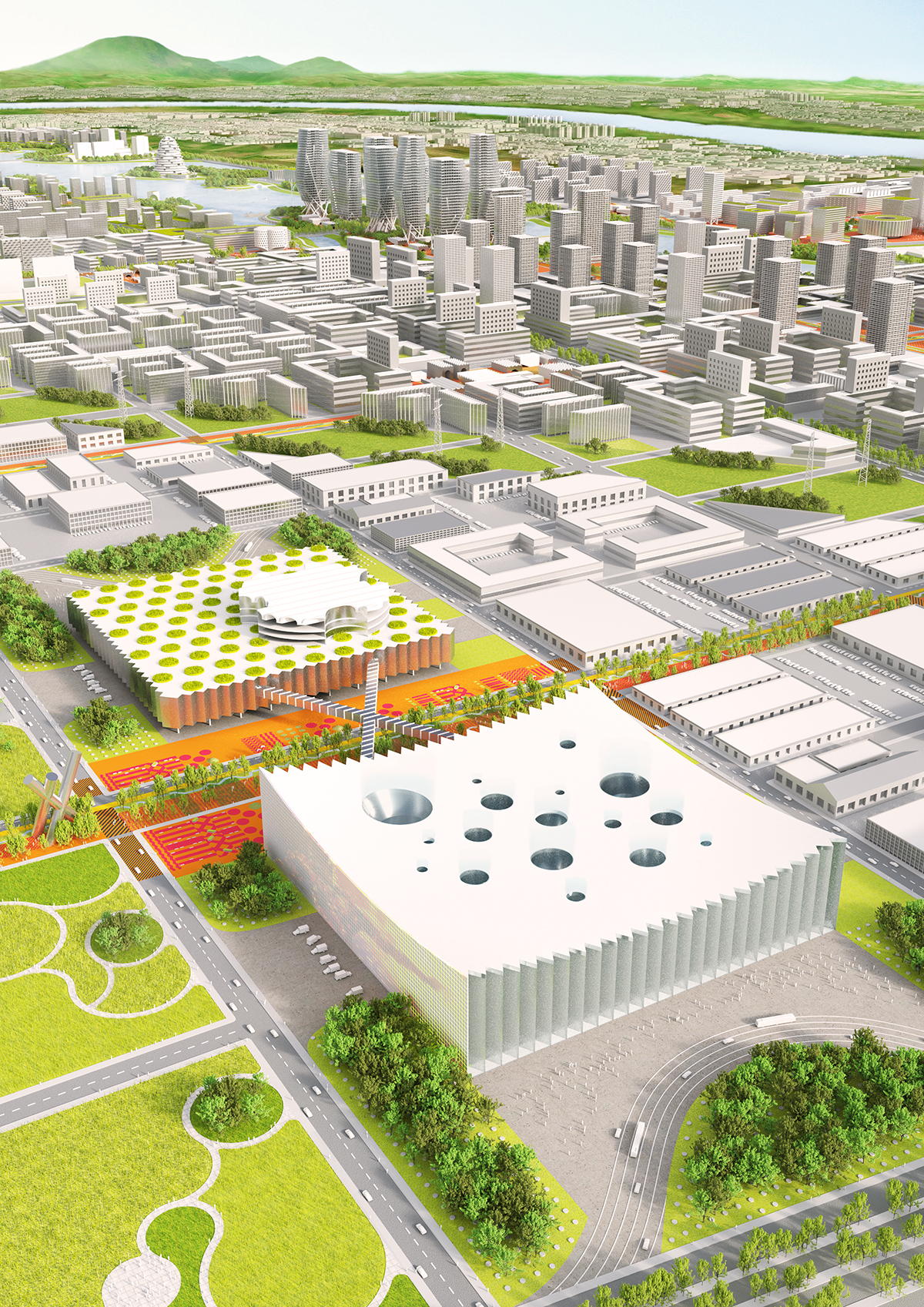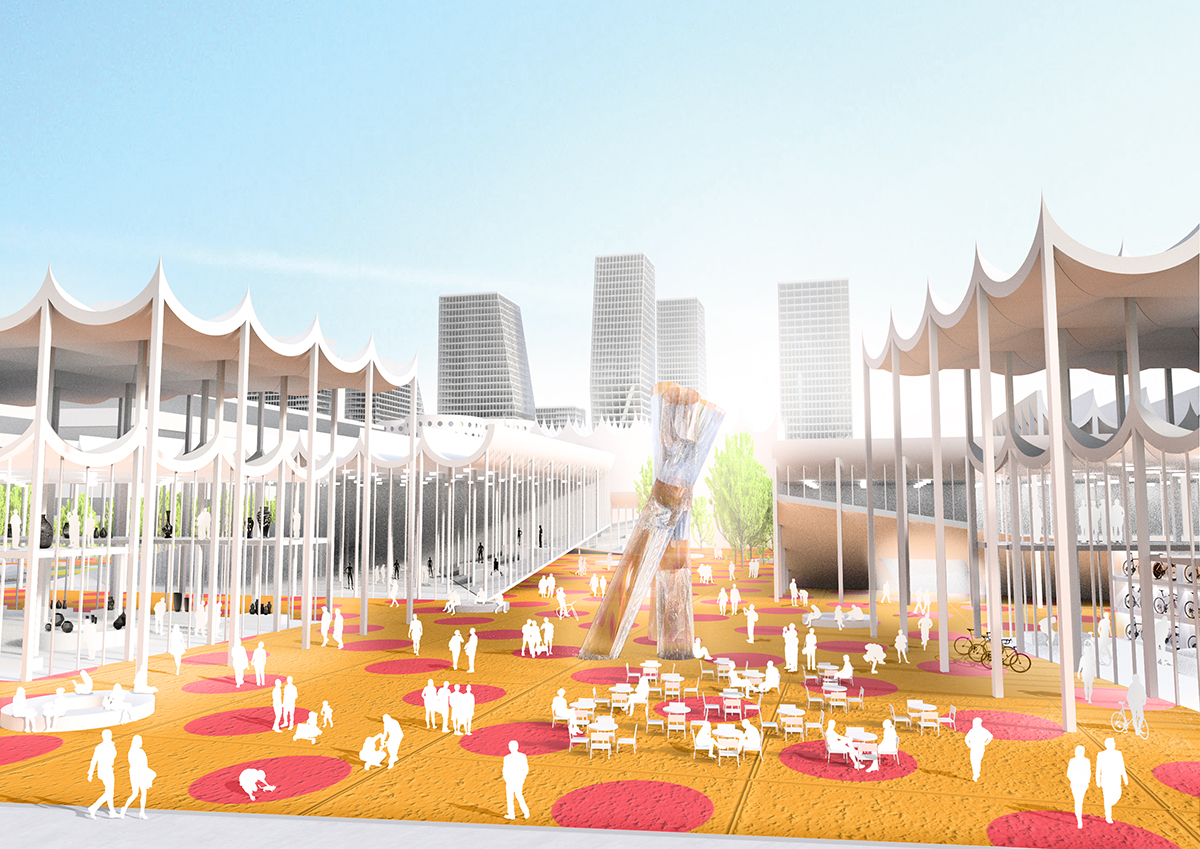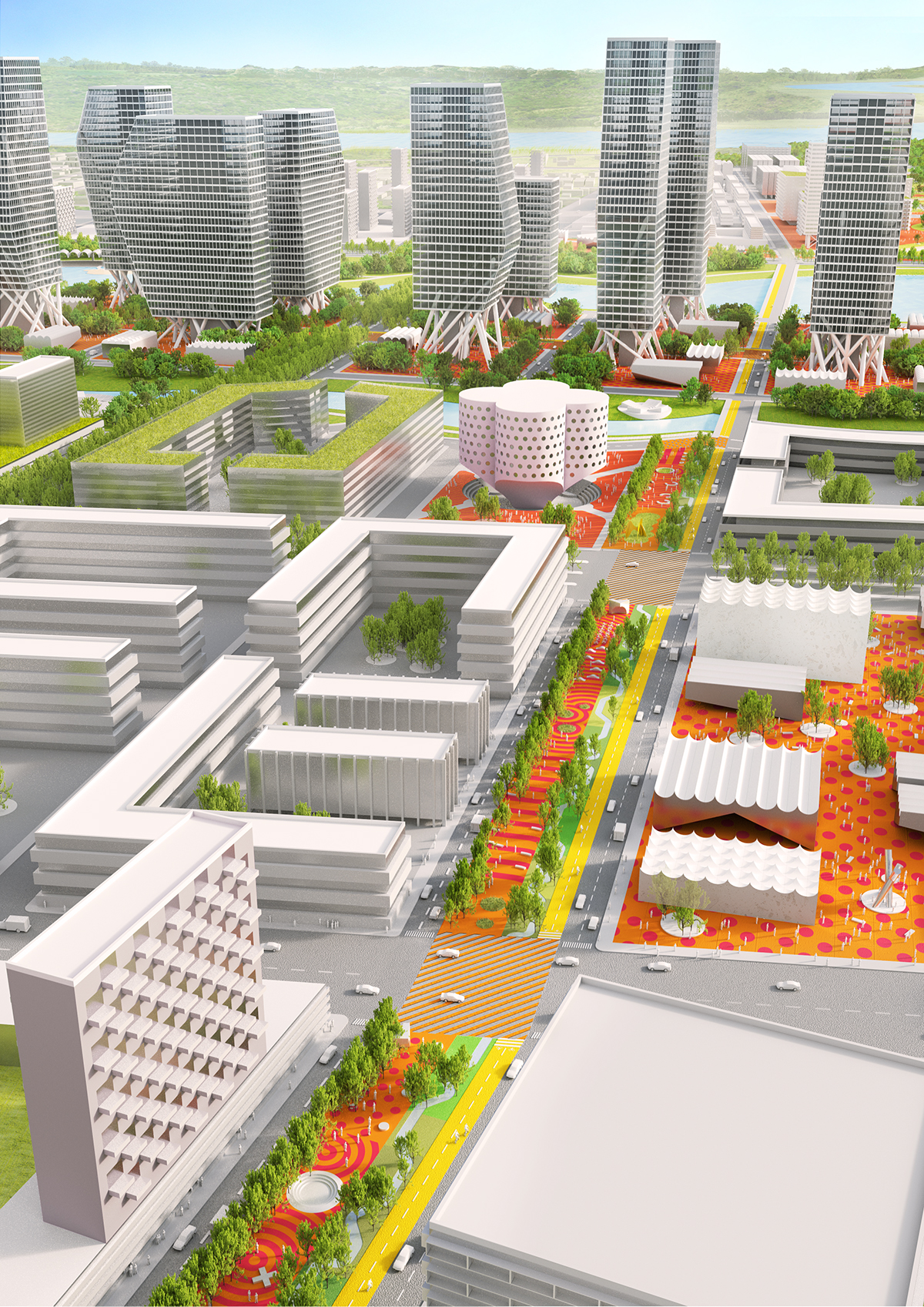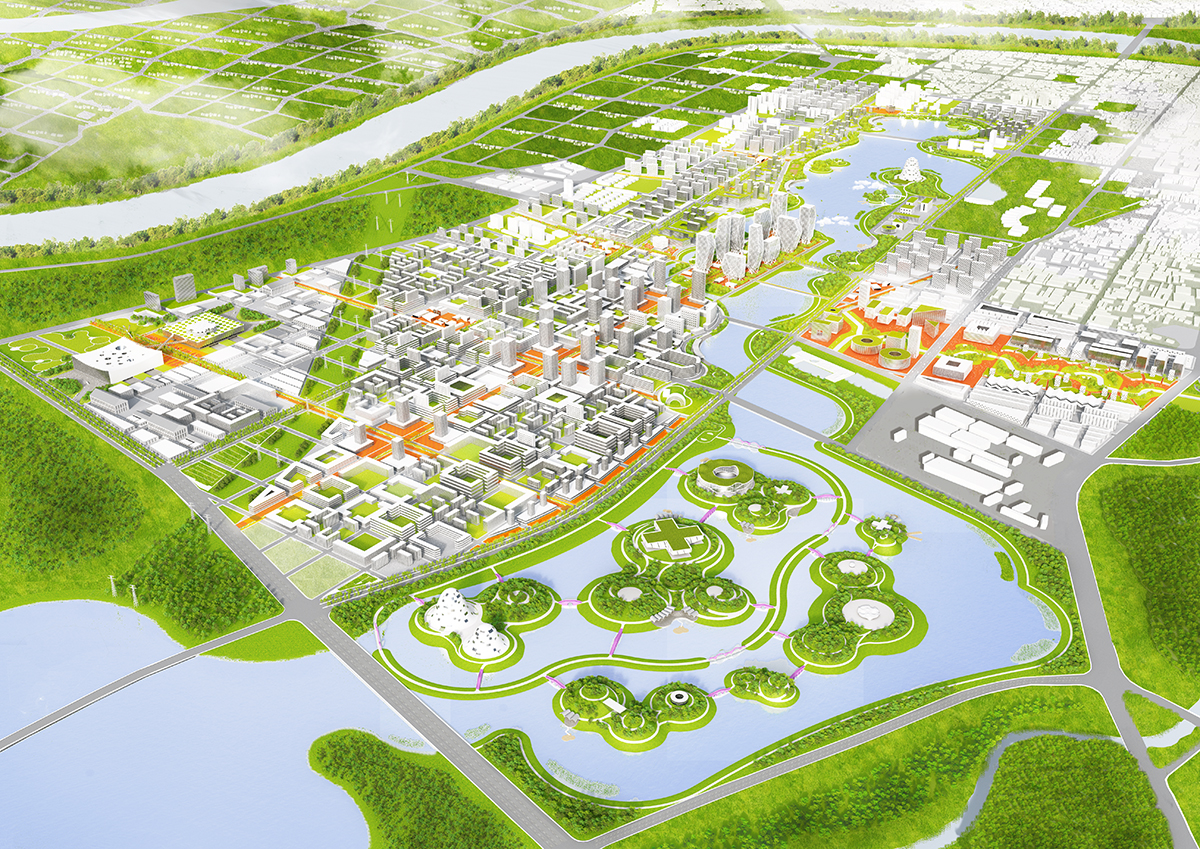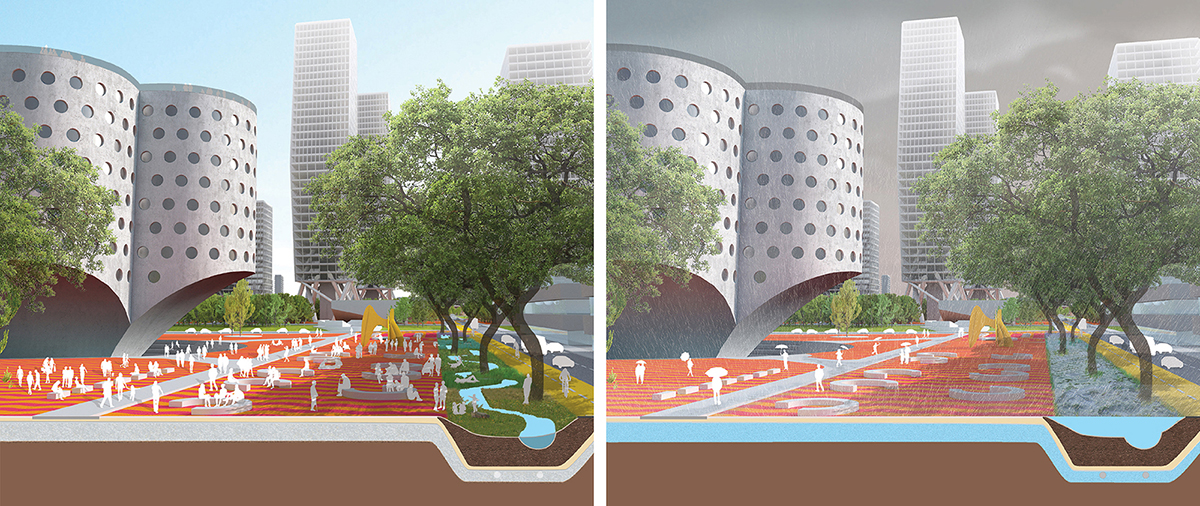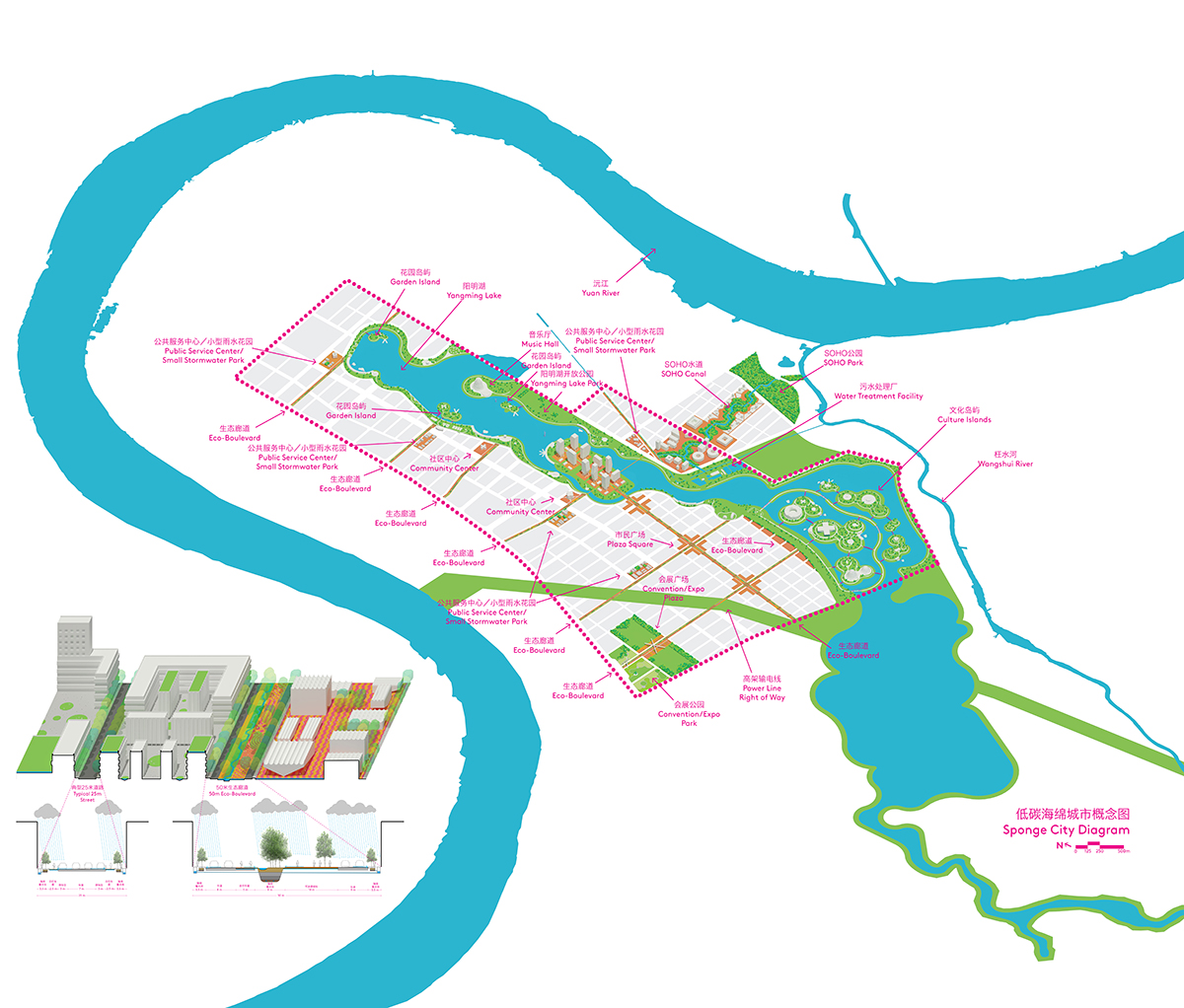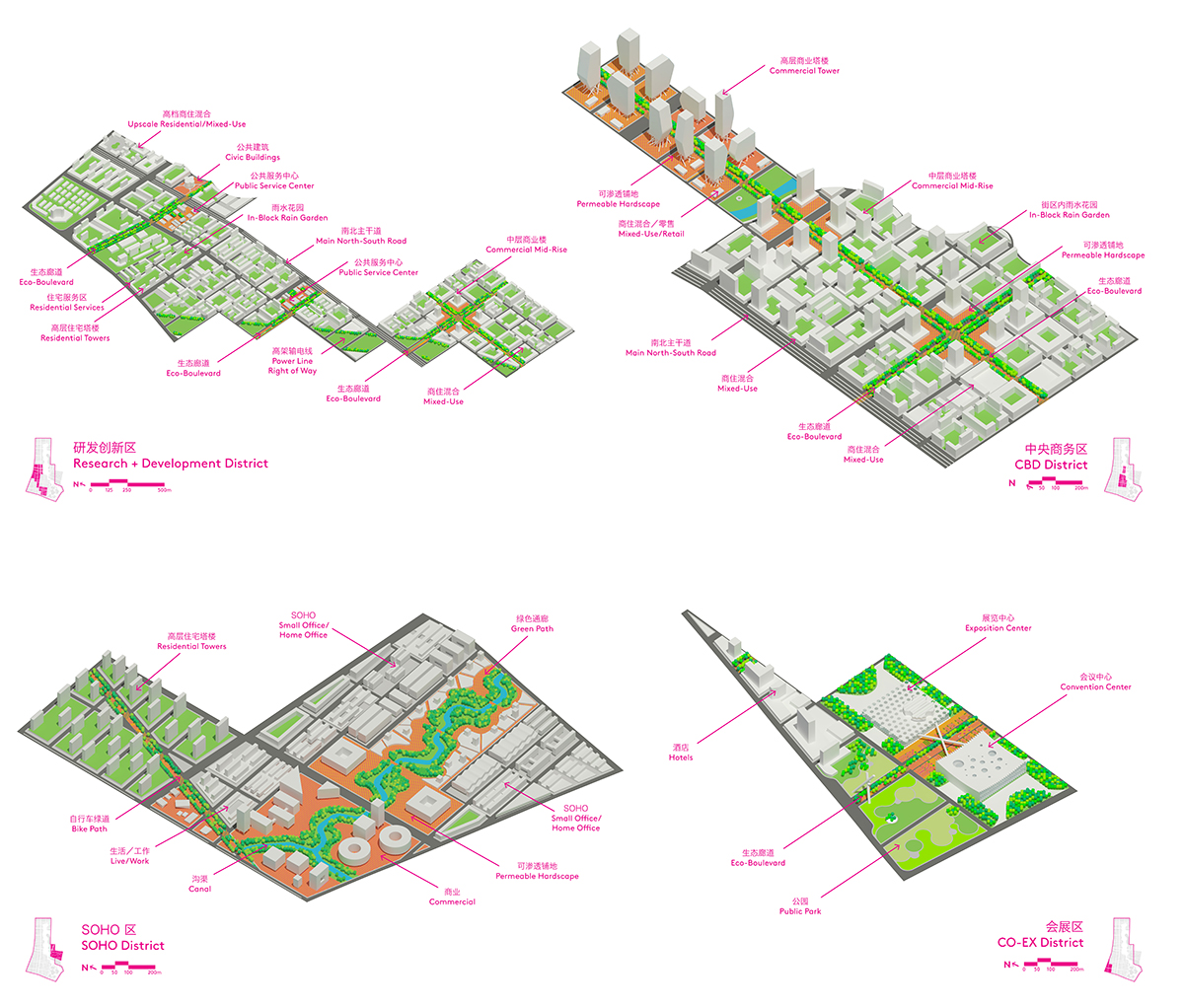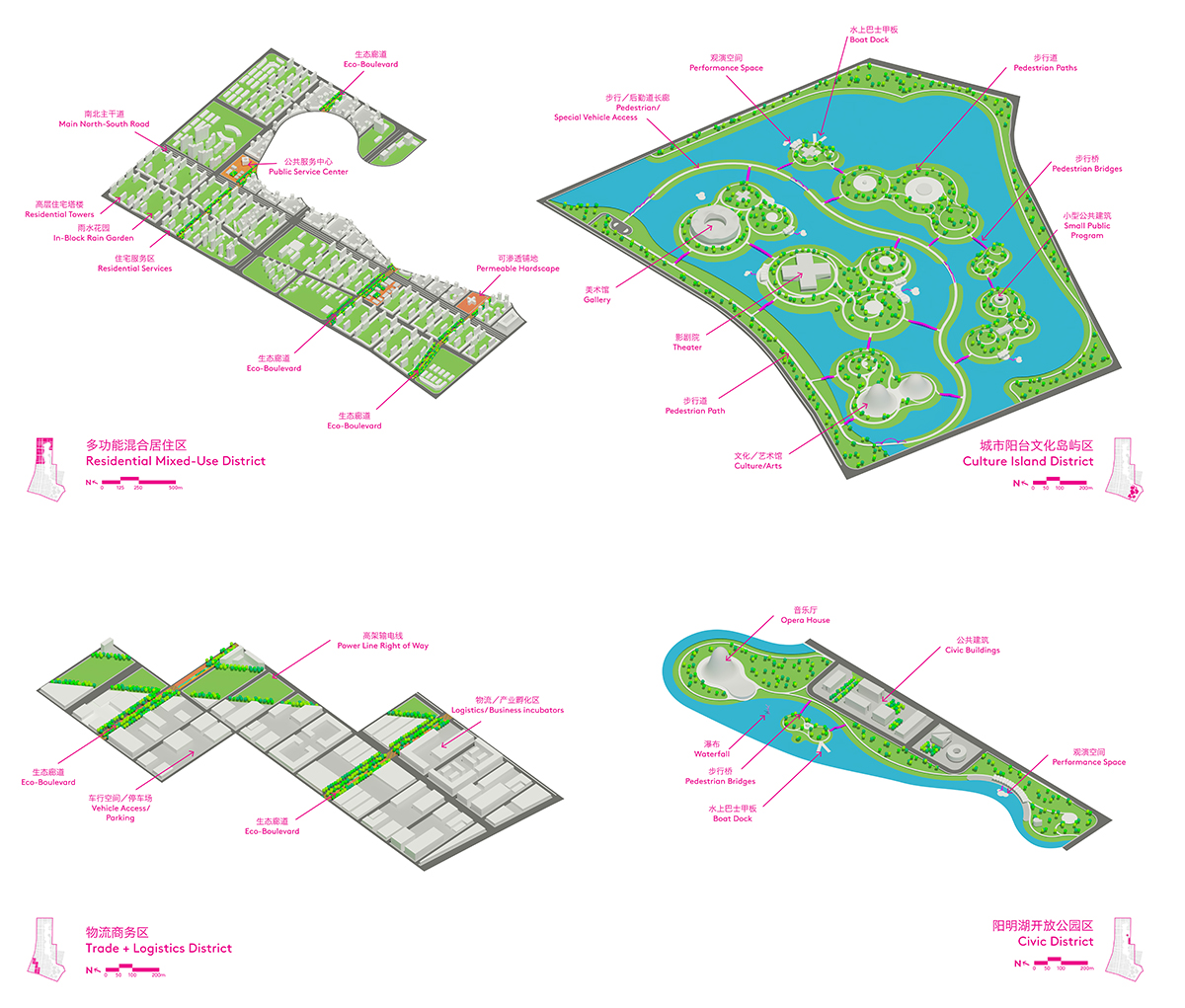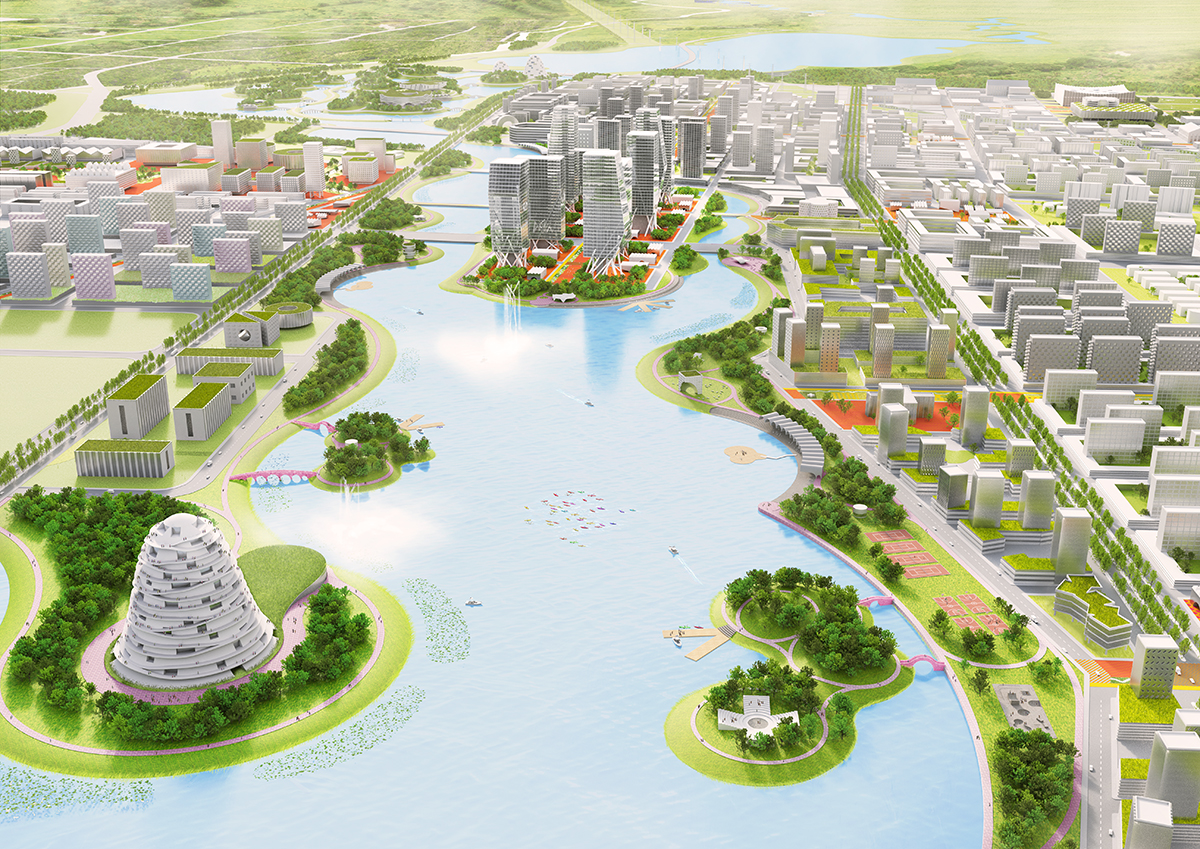
Changde, China
UrbanLab’s master plan for Changde – a fast-growing city in China’s Hunan Province – is a new district that will accommodate 600,000 people in 5 square miles (13 square kilometers). Currently, the project site is sparsely developed farmland bordered by high-density superblocks. At the center of the site is a highly polluted lake that is prone to flooding. UrbanLab’s principle design concept is to reimagine water as an amenity (not a problem) for people. The lake is re-planned as a “central water park” for the entire city. To help clean the lake, water filtering infrastructures, or “Eco-Boulevards” (rendered in orange on the drawings) pre-treat storm water runoff. Eco-Boulevards are connected to additional water filtering infrastructures such as tree-lined feeder roads, storm water parks, and in-block rain gardens. Together, the streets and open green spaces are a porous framework, or holistic “Sponge City,” which naturally absorbs and cleans rainwater before entering the lake. A fine-grained urban grid accommodates a mix of transportation options within and between eight new sub-districts. Compared to contemporary, car-centric urban grids in China that encircle gated superblocks, the geometry of the compact grid allows for a highly efficient bus transit system, reducing energy use and pollution. Bus stops and transfer nodes are planned within a 10-minute pedestrian walk to all new developments. In the lake, a group of new islands are planned. The “Central Business District Island” contains the most prominent new commercial buildings, and a chain of “Cultural Islands” contains new civic venues and gardens. UrbanLab continues to consult with Changde’s Planning Bureau to help implement the master plan.

